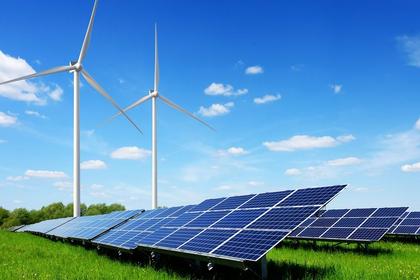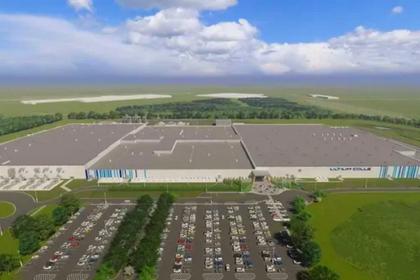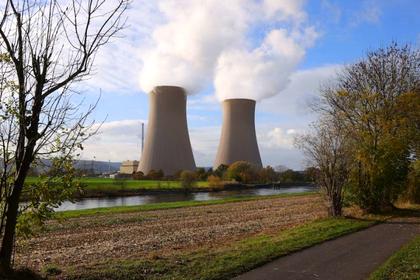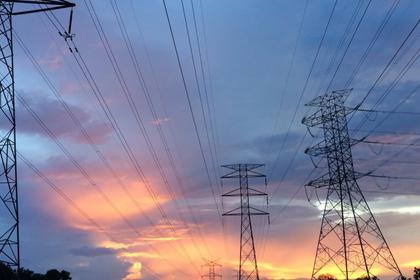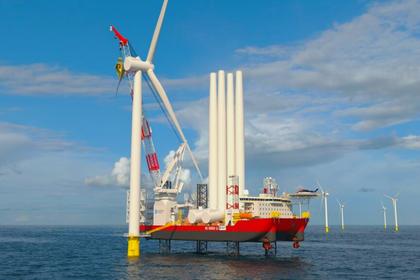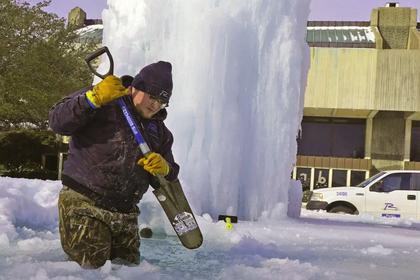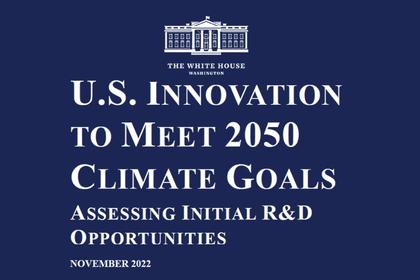
U.S. POWER GRID PROBLEMS
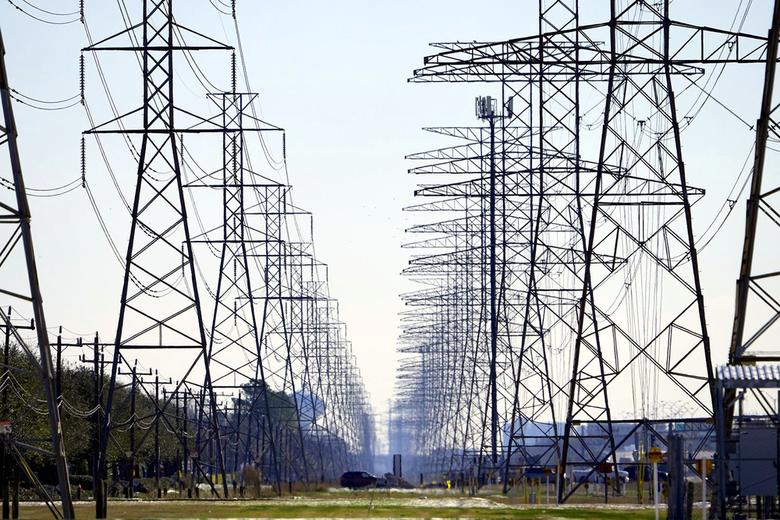
By PAUL HOBCRAFT Innovation & Energy Knowledge Provider Agility Innovation
ENERGYCENTRAL - Jan 18, 2023 - Sometimes we need to go back to basics, review the underlying problems and take a new, fresh think over the approach to take. I am sure all involved in planning and managing Grids are going through tough times. Here is my take on those basics and the value of addressing them in a fresh, innovative way that groups ideas, and concepts and brings thinking into a common framing to look at and explore the possible solutions on a broader basis.
There is a growing, possibly intense focus and awareness that our Energy Grids worldwide are in serious trouble.
The significant changing consumption needs and generation patterns are causing significant concerns that existing ageing infrastructure is becoming a major source of risk to power grid safety, reliability and financial exposure and in failing to deliver power on the expected 24 x 7, we need.
If you look at ten of the top issues that are causing a growing crisis
- Ageing or outdated infrastructure
- Supply chain failures are delaying infrastructure equipment changes.
- A continued public opposition delaying infrastructure options and bureaucratic barriers
- There is a continued lack of sizable funding to make major changes
- System redundancies and stranded assets and the issues of legacy write-offs
- The increased complexity of the grid is still unclear in its final generation mix design
- Cyber Attacks are continuing and exposing significant weakness
- Extreme weather events are growing and exposing grid vulnerabilities.
- Previously poor project management, inconsistencies in capital spending
- Changing demand needs, the acceleration of electrification and the lack of new infrastructure
The need is to find effective responses and considerations of the options, managing change simultaneously while maintaining increasing power demand.
The energy system is being disrupted, and where there are levels of high disruption, there is always uncertainty, debate and learning to take risker views of the future, creating a lot of unease and hesitation. As quoted by one senior person, “we have an inadequate view of what – positively, and in detail – we’re building towards.
As the sector transforms at such an accelerating rate, the move towards ambitious decarbonization targets has required that clean energy is explored in all those options and required to be pushed to the forefront of future solutions. Integrating that variable green energy onto the grid and hardening infrastructure assets against extreme weather are proving some industry’s most pressing challenges.
Changing the ageing grid infrastructure system needs to be gradual and systematic and cause the least disruption to the power supply. This evolving into a new grid design is no easy task when you are dealing with thousands of transmission points, lines and final consumer points, all that needs to be considered and often replaced with different technology solutions to bring them up to date. The level of existing asset investment in dispatchable energy, the generation mix will require fewer traditional base load units and more utility-scale renewable sources.
This major shift from conventional central generation, heavily reliant on coal, gas and oil, to a more decentralised system and variable sources that bring solar, wind, hydro, hydrogen and nuclear into the mix where a greater reliance on storage of energy is closer to the point of consumption is radical in all this means to have the right grid infrastructure design.
In a recent report from DNV, a thought leadership report, “Future-proofing our power grids“, their Energy Industry Insights 2022 Power Grids Research Report, DNV lays out the challenges but points towards many of the solutions.
In this report Chapter 2, entitled “Ingenuity and New Ideas” specifically caught my eye as innovation forms my core support in the Energy Sector. Let me pick out the five exciting ones in my mind.
“Congestion, complexity, uncertainty, policy, bureaucracy, supply chains —there are a daunting collection of challenges and barriers to successfully build future power grids. But there is good cause for positivity” is the starting point of the chapter.
Firstly resolving the flexibility challenge. I quote from the DNV report: “the future power system will need to balance demand and supply carefully to manage the variability of renewables. This is known as flex. Four leading solutions provide these flex needs, including generation management, demand-side management, grid coupling and energy storage. Each solution plays a role at different points and timescales, including energy storage. Energy storage has the potential to address many of the biggest challenges in building the electrical power system of the future.”- “Energy storage is a buffering system.” that solves much of the distributed power needs closer to the final consuming point.
Smarter transmission. I quote again from the DNV report, “Virtual transmission lines are examples of storage as a transmission asset (SATA) projects. In this case, the batteries can be treated as transmission assets for regulatory purposes, allowing utilities to access incentives and receive a guaranteed rate of return on their investment…..“It becomes like a piece of the transmission system”. When transmission lines become congested, power can be offloaded into storage, which can continue its journey later when congestion is lower. Virtual transmission is cheaper and quicker to deploy than new transmission lines. It has a smaller footprint and a far simpler path to planning and regulatory approval” Virtual transmission lines are examples of storage as a transmission asset (SATA) projects.
Solutions for new market dynamics. Again I quote from DNV, “As with all the changes that are taking place on our power grids, significant shifts are required at the physical, operational, digital, market, and regulatory layers of the system. “You can invest huge amounts into any particular technology, such as energy storage, but fail to realize its full societal value because you have not addressed some critical systemic issues, both physical and regulatory,” says Mark Paterson from Strategen. “These hidden structural issues, which were not apparent in a highly centralized, fossil-fuel-based system, now prevent the ‘value-stack’ of energy storage from being fully unlocked across all power system segments.”
International super-grids. Again quoting, “An advantage of HVDC super-grids is they side-step one of the key challenges involved in cross-border energy trade. “Because super-grids will use HVDC, there is no need to worry about grid synchronisation between countries,” says John Irving from the World Bank. “You’ve got a highly controllable inverter at each end that provides a security buffer. For example, in the Pan-Arab region, the Saudi Arabian system is 60Hz, whereas all the other contiguous countries operate at 50Hz. There’s no way they can ever align with each other, but they can still interconnect with HVDC. Super grids will be like an HVDC backbone that will sit on top of the HVAC systems below.”
Visibility and smarter use of data– Again, quoting from DNV’s report, “People need a view of the network to design flexible solutions and innovations for the grid,” says Florence Silver, “They need to know which assets are connected to which, and in what way. They need to design and test their own use cases. They need to make informed decisions. This relies on a common information model to ensure that operators share standardized data that are interoperable.” Sabine Erlinghagen also emphasizes the importance of interoperability and standardizing data exchange protocols. “Interoperability is crucial to the success of data-driven innovations, but we also need to be open so that operators are not stuck with one vendor; they can add modules from many vendors and create their own customizations and interface via APIs.
Building a modern Grid infrastructure
The task is a daunting one. To unwind the existing system and keep the power on, and progressively integrate all the new variables of renewable energy options (solar, wind, hydrogen, possibly nuclear), build out distributed storage and build microgrids and receiving of energy from multiple points and constant electrification expansion. Couple this with the infrastructure work of new cables, substations, intelligent smart switches, load and meter monitoring and growing data evaluations; the greater reliance on software all need installing, integrating and achieving this greater reliability, resilience and risk management.
The grid becomes a more visible energy-intensive process that has to be more reactive and dynamic to activate responses quickly and far more locally situated to limit extreme weather conditions to offer availability 24 x 7.
Six top-of-mind concerns
So knowing where to begin is partly dependent on individual parties, available funding and needs. There are six big concerns: 1 -Generational mix, managing fewer traditional base loads and building / acquiring more utility-scale renewable sources, 2 -Recognize and attempt to resolve the regulatory lag in meeting the needs of the system changes along the Grid system, 3 -Overcome the lack of qualified workers to engineer, maintain, and operate the more complex system occurring; 4—the ability to attract new capital to invest in and maintain a more resilient grid, 5 -Resolve the sufficient transmission facilities and system control assets needed, 6—the significant increases in DER.
We are right in the middle of an electrical power revolution.
The days of the highly centralized, one-directional model are being dismantled and reinvented. The pressure of “saving our planet” from fossil fuel and the need to decarbonize our energy systems are presenting further complexity at a formidable scale.
We still have an inadequate view of what we’re building towards in power generation solutions based on green energy, storage use, and the impact at the final consumers’ end. Grids will become two-way but highly unpredictable. The dynamics within the Grid System will rely on software, smart meters, applications and sensors to feed data into a highly flexible system to manage, direct and control the need for power in a more decentralized, heavily dependent world increasingly reliant on electrification.
The multiple challenges of redesigning our Power Grids is a mammoth task and needs greater recognition of all that is involved.
Main source: DNV, a thought leadership report, “Future-proofing our power grids“, their Energy Industry Insights 2022 Power Grids Research Report.
-----
This thought leadership article was originally shared with Energy Central's Grid Professionals Community Group. The communities are a place where professionals in the power industry can share, learn and connect in a collaborative environment. Join the Grid Professionals Community today and learn from others who work in the industry.
-----
Earlier:
